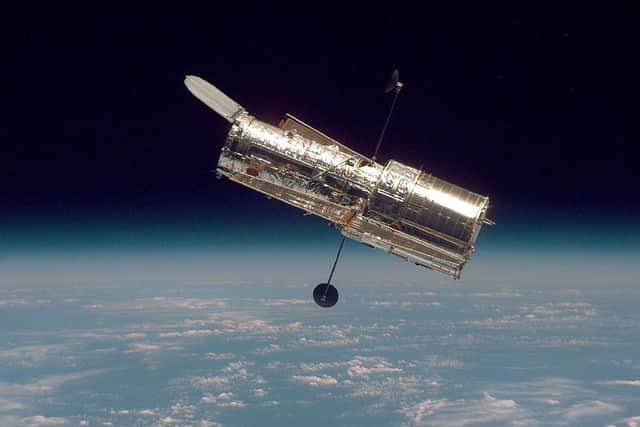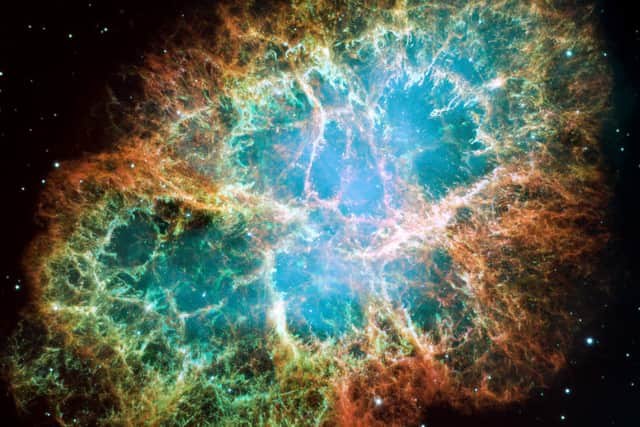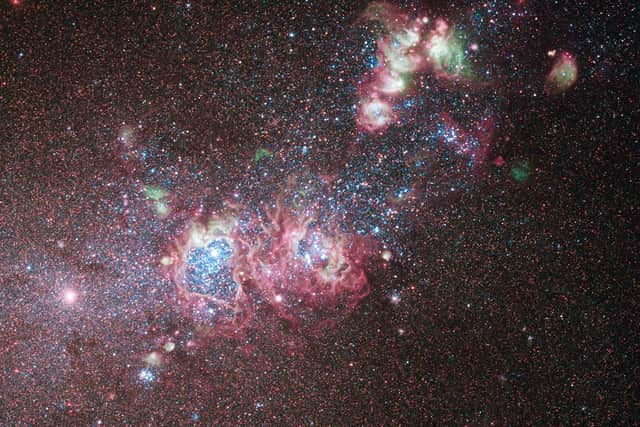NASA birthday picture: what photo did Hubble Space Telescope take on day I was born - what is APOD calendar?
and live on Freeview channel 276
Since 1990, the Hubble Space Telescope has floated through space, taking pictures of the universe 24 hours a day, seven days a week - meaning that in its time, it has witnessed some incredible cosmic events.
Using a tool on the Nasa website, you can see what deep-space images the telescope captured on your birthday.
This is everything you need to know.
What is the Hubble Telescope?
Advertisement
Hide AdAdvertisement
Hide AdThe Hubble Space Telescope, also known as just the Hubble, is a huge telescope in space, which Nasa launched in 1990.
According to the space agency, the Hubble is “as long as a large school bus” and “weighs as much as two adult elephants”. The Hubble spends its time travelling around earth at around five miles per second, which is the equivalent of driving a car from the east coast of the US to the west coast in just 10 minutes.


The telescope faces towards space, and it takes pictures of planets, stars and galaxies. It has witnessed the birth and death of stars, black holes, galaxies that are trillions of miles away and has even seen comet pieces crash into the gases above Jupiter.
Nasa says that the Hubble has “fundamentally changed our understanding of the cosmos, and its story - filled with challenges overcome by innovation, determination, and the human spirit - inspires us”.
Advertisement
Hide AdAdvertisement
Hide AdThe telescope got its name from Edwin P Hubble, who was an astronomer who made important discoveries about the universe in the early 1990s.
Astronauts have visited the Hubble five times to fix it, adding new parts and cameras to the telescope. In 2020, it turned 30 years old.
How do I use the feature?
Nasa says: “The Hubble explores the universe 24 hours a day, 7 days a week. That means it has observed some fascinating cosmic wonder every day of the year, including on your birthday.”
To see with the Hubble saw on your birthday, you just need to head to the Nasa website.
Advertisement
Hide AdAdvertisement
Hide AdFrom there, select the month and date that you were born and hit submit to see what it saw on your birthday.


You’ll be shown a picture and will be given some information about what the Hubble saw. If you click on the “more information” option, you’ll be taken to a new webpage on the Hubble site which tells you all about the image.
You can easily share your image to social media, like Twitter, Facebook and Pinterest by clicking on the icons in the upper left corner. Users are encouraged to share their birthday image on social media with the hashtag #Hubble30.
The Nasa website says that for Firefox users, “you might need to turn off content blocking for this site in your browser’s privacy settings” if you’re wanting to share your Hubble birthday image on social media.
Advertisement
Hide AdAdvertisement
Hide AdA text version of the tool is also available for screen readers.
What did the telescope see on notable dates?
These are some examples of what the Hubble Telescope saw on some notable dates throughout the years.
On 25 December 2009, the telescope saw the dwarf galaxy NGC 4215, with the image capturing “intricate patterns of glowing hydrogen shaped during the star birthing process, cavities blown clear of gas by stellar winds, and bright stellar clusters”.


On 1 January 2012, it saw the galaxy Leo IV, which is one of more than a dozen ultra-faint dwarf galaxies near the Milky Way.
Advertisement
Hide AdAdvertisement
Hide AdOn 31 October 2005, the Hubble saw the nebula NGC 281, with the image showing “dark knots of gas and dust called “Bok Globules””.
What’s APOD?
APOD stands for Astronomy Picture of the Day, and it is a website which features a different image or photograph of the universe, based on work supported by Nasa.
A brief explanation of the image or photograph is accompanied by a professional astronomer to help you understand exactly what is going on.
APOD is originated, written, coordinated and edited by Robert Nemiroff and Jerry Bonnell since 1995, and contains the largest collection of annotated astronomical images on the internet.
You can see the full archive of pictures from APOD, dating back to 16 June 199 on its website.
You can also see the APOD calendar which lets you select the month and date you want to see.
Comment Guidelines
National World encourages reader discussion on our stories. User feedback, insights and back-and-forth exchanges add a rich layer of context to reporting. Please review our Community Guidelines before commenting.
